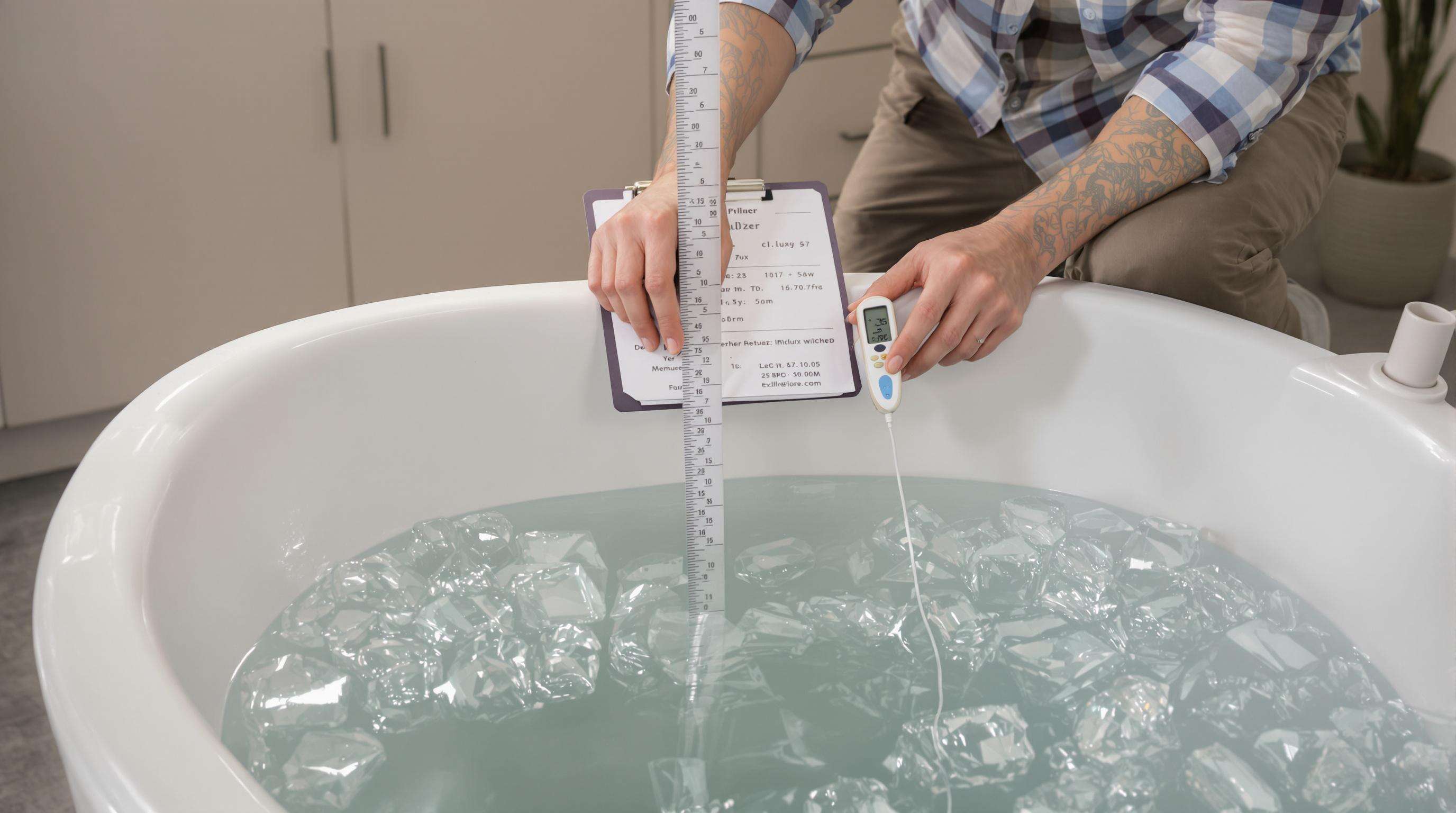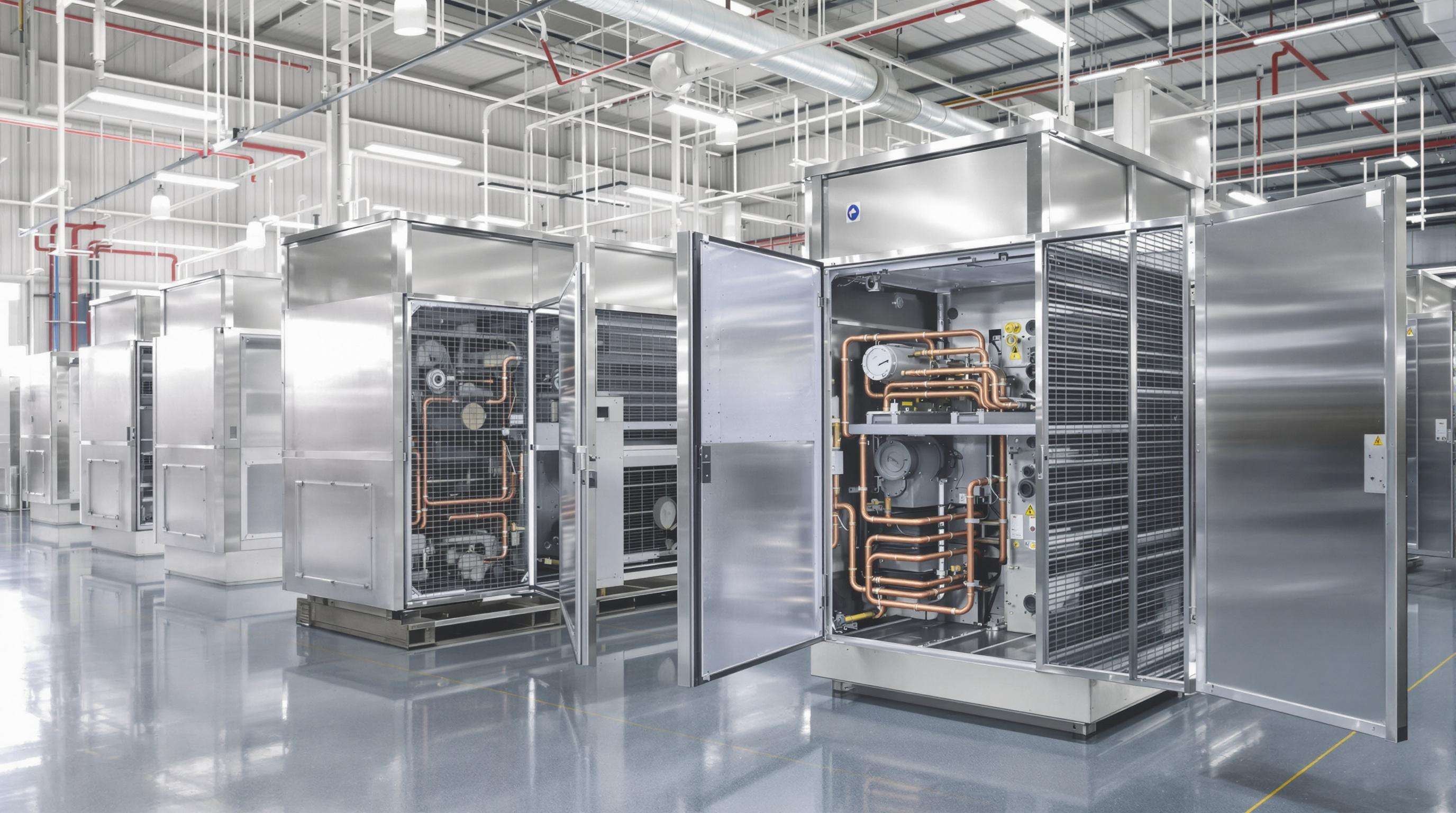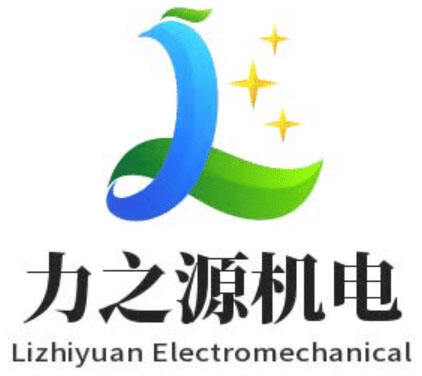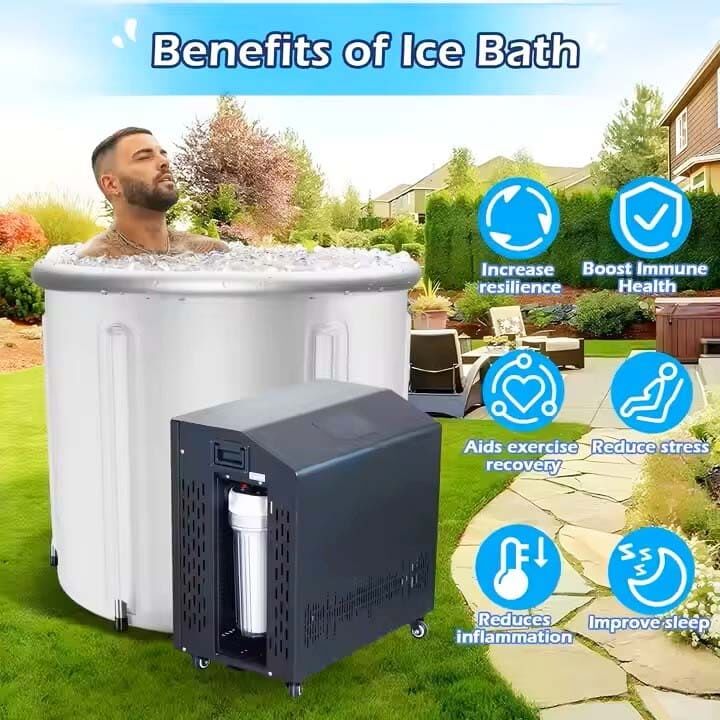Calculating Your Ice Plunge Chiller Cooling Requirements

Sizing Chillers Based on Tub Volume and Usage Frequency
Calculate your tub's water volume using length × width × depth (in inches) × 231 to convert to gallons. Most residential systems require 0.3–1.5 HP chillers, with 1/2 HP units effectively handling 100–120 gallon tubs in moderate climates. Daily users in warm regions typically need 25–40% more capacity than weekend users to maintain consistent 40°F temperatures.
Mastering BTU Formulas for Accurate Cooling Loads
Use the fundamental BTU formula:
Cooling Load (BTU) = Volume (Gallons) × 8.33 × Target Temperature Drop (°F)
For example:
- A 120-gallon tub cooled from 70°F to 40°F requires 29,988 BTU (120 × 8.33 × 30)
- Each 5°F decrease below 50°F increases BTU requirements by 18–22% due to water density changes
High-usage scenarios (3+ sessions/day) necessitate chillers with 15–20% excess capacity to account for heat reintroduction.
The Relationship Between Water Volume and Cooling Speed Expectations
Cooling time scales exponentially with volume–a 150-gallon tub requires 2.1× longer initial cooldown than a 75-gallon system at identical BTU ratings. Key benchmarks:
| Volume | Target Temp | Avg. Cooldown Time* |
|---|---|---|
| 100 gal | 50°F | 4–6 hours |
| 150 gal | 45°F | 8–11 hours |
*Ambient temp 75°F, 1/2 HP chiller
Systems in hot climates (85°F+) require 30–50% longer stabilization times.
Evaluating Ice Plunge Chiller Performance Specifications

Decoding HP, BTU, and COP Efficiency Ratings
Horsepower (HP) determines raw cooling power, with 1 HP models handling 150–200 gallons effectively. British Thermal Units (BTU) quantify heat removal–opt for 12,000+ BTU systems for commercial setups. The Coefficient of Performance (COP) measures energy efficiency; ratings above 3.0 reduce energy costs by 30% (HVAC Industry Report 2023).
Temperature Control Precision and Consistency Testing
High-performance chillers maintain ±1°F accuracy in 90°F ambient heat through PID-controlled refrigerant cycles. Third-party testing shows units requiring 2–3 hours to cool 200 gallons to 50°F sustain this temperature within 1.5°F fluctuations during 45-minute soak cycles.
How Compressor Technology Impacts Refrigeration Efficiency
Scroll compressors outperform reciprocating models by 15% in cooling efficiency (Refrigeration Systems Journal 2024), extending service intervals to 8–10 years versus 5–7 years for traditional designs.
Assessing Ice Plunge Chiller Build Quality
Material Durability for Saltwater and Extreme Temperature Resistance
| Material | Saltwater Resistance | Temperature Cycling Tolerance | Expected Lifespan |
|---|---|---|---|
| 316L Stainless Steel | Excellent | 5,000+ cycles | 8-12 years |
| Marine-Grade Polymer | Good | 3,200 cycles | 5-7 years |
Component Lifespan Analysis Across Price Tiers
| Tier | Compressor Grade | Warranty Period | 5-Year Total Cost |
|---|---|---|---|
| Entry-Level | Light-Duty | 1 year | $3,800 |
| Mid-Range | Semi-Commercial | 2 years | $5,200 |
| Premium | Commercial | 5 years | $7,100 |
Budget Planning for Your Ice Plunge Chiller
Price vs Long-Term Operational Savings Breakdown
Commercial chillers range from $1,200–$2,500 (entry-level) to $8,000+ (premium). High-efficiency units reduce energy bills by 30–40% through variable-speed compressors.
Maintenance Cost Forecasts and Energy Consumption Patterns
| Cost Factor | Budget Model ($1k–$2k) | Mid-Range ($3k–$6k) | Commercial-Grade ($8k+) |
|---|---|---|---|
| Annual Energy Use | 900–1,200 kWh | 650–850 kWh | 400–550 kWh |
Validating Ice Plunge Chiller Performance Through User Experiences
Analyzing Failure Patterns in Customer Reviews
A 2023 analysis of 1,200 verified purchases found compressor failures accounted for 38% of malfunctions. Seasonality patterns show a 62% increase in failures during summer months.
Service Response Times and Warranty Claim Realities
Manufacturers' advertised “24/7 support” often translates to 48-hour average response times (Cold Therapy Alliance 2024 study).
Comparing Ice Plunge Chiller Models Strategically
Manufacturer Reputation Audits Through Industry Forums
Reliable brands demonstrate 5-7 year component longevity in real-world installations, while budget models show cooling capacity degradation within 18 months.
The Maintenance Realities Most Specifications Sheets Overlook
| Consideration | High-Efficiency Models | Rapid-Cooling Models |
|---|---|---|
| Annual Energy Cost | $220-$280 | $380-$520 |
| 50°F Cooling Time | 4.5-6 hours | 1.8-2.5 hours |
FAQ Section
What factors should I consider when sizing a chiller for my ice plunge tub?
Consider the water volume of the tub, frequency of use, and the climate you are in. More frequent use in warmer climates may require a chiller with higher capacity.
How do I calculate the cooling load in BTU for my ice plunge chiller?
Use the formula: Cooling Load (BTU) = Volume (Gallons) × 8.33 × Target Temperature Drop (°F).
What are the benefits of selecting a high-efficiency chiller?
High-efficiency chillers can reduce energy costs significantly and offer more precise temperature control.
How important is the material used in a chiller for durability?
Materials like 316L Stainless Steel or marine-grade polymers can offer excellent resistance to saltwater and temperature extremes, impacting the chiller’s lifespan.
Table of Contents
- Calculating Your Ice Plunge Chiller Cooling Requirements
- Evaluating Ice Plunge Chiller Performance Specifications
- Assessing Ice Plunge Chiller Build Quality
- Budget Planning for Your Ice Plunge Chiller
- Validating Ice Plunge Chiller Performance Through User Experiences
- Comparing Ice Plunge Chiller Models Strategically
- FAQ Section

